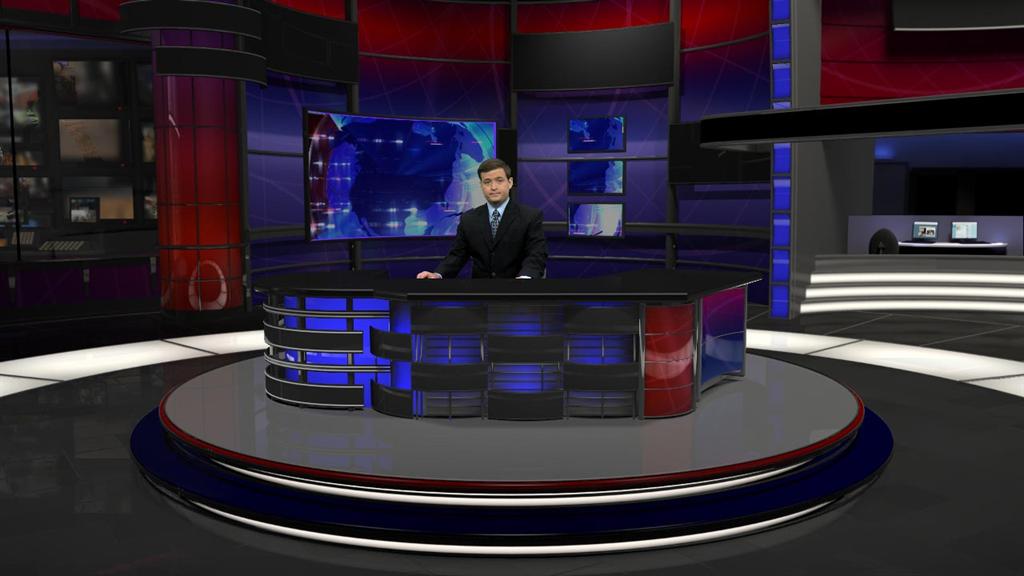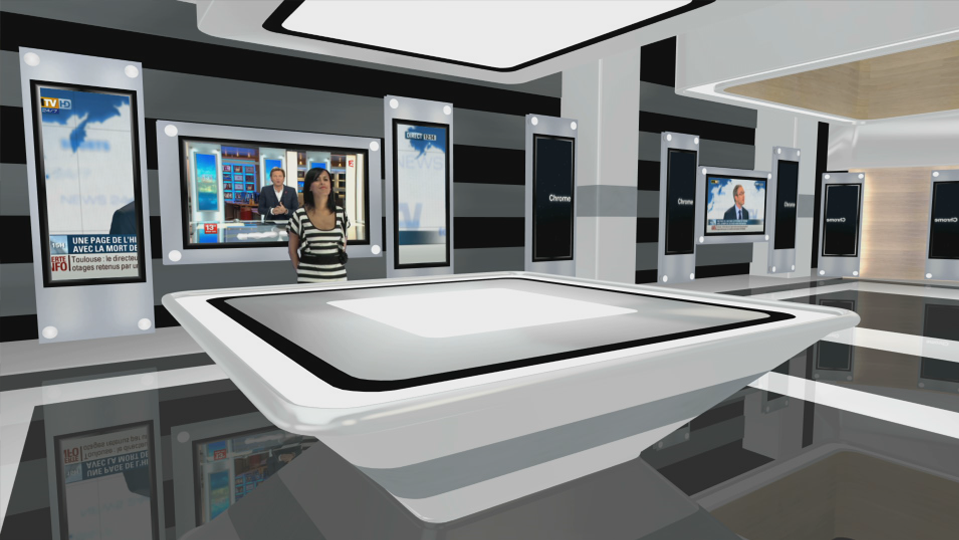Virtually Accessible

WAAY-TV uses NewTek’s Virtual Set Editor to create virtual sets for all of their regular newscasts.
OTTAWA—ABC affiliate WAAY-TV of Huntsville, Ala. is a firm believer in the power and economy of virtual sets. That’s why the Calkins Media-owned station purchased NewTek’s Virtual Set Editor software when they installed a NewTek Tricaster 850 integrated live production system into WAAY-TV’s master control.
“We use Virtual Set Editor to create virtual sets for all of our regular newscasts, plus a number of weekly programs,” said James Hessler, WAAY-TV’s newscast director. “We’ve been able to customize the templates that come with VSE to create distinctive branded sets that look great on air, but are far less expensive and easier to make than physical sets.”
WAAY-TV is so happy with NewTek’s virtual sets that it is using VSE to create sets for a newscast that the station produces for another smaller broadcaster. “VSE allows us to create individual, professional-looking sets for them, while allowing us to produce their content at our facilities with our talent,” Hessler said.
The Dallas Morning News newspaper uses VSE along with its NewTek TriCaster 300 to produce video reports for www.dallasnews.com. “We are able to shoot a number of different programs in a 20-foot by 30-foot green-screened room,” said Brian Elledge, the newspaper’s video producer. “We have altered the supplied VSE templates to match our corporate look. They are very easy to work with, and the final product is very professional.”
NewTek clearly sees the value in linking virtual set creation to its integrated production systems. “This is why every TriCaster comes with the ability to do real-time keying of virtual sets, and why we created VSE,” said Philip Nelson, NewTek’s SVP of artist and media relations. “We have brought out a new version of Virtual Set Editor called VSE 2. It comes with two licenses, allowing users to put VSE on their TriCaster and on a separate computer as well.”
CHOICES INCLUDE 3D AND INFRARED
NewTek is just one of many vendors who have developed virtual set creation products. Hybrid, a French-based provider of real-time graphics and robotic camera systems, makes 2D/3D virtual set creation tools (Helium 2D and Krypton 3D) and the robotic camera heads (“Silver” for lightweight cameras, “Titanium” for heavier units) that are typically used with them.
“Our Krypton 3D virtual set is a powerful graphic engine allowing rendering of 3D graphics and real time video inputs and outputs,” said Hybrid CEO Olivier Cohen. “Krypton is a complete real-time multi-layer 3D graphic engine that can render virtual sets, 3D objects or real-time videos as well as foreground graphics.”
Orad offers both Pattern Recognition and Xnyc infrared tracking systems for cameras used with its virtual set systems. “The higher-end solution is the Xync infra red tracking system, which offers free camera movement in the studio space,” said Ofir Benovici, Orad’s vice president of marketing. “The Pattern Recognition solution is based on image analysis and does not require any device to be mounted on the camera. It monitors camera tracking by analyzing the video image itself naturally.”
Orad has a portfolio of virtual set packages including BlueSet (SD/HD) and ProSet (SD/HD). ProSet offers depth-of-field shaders that focus and defocus the virtual background depending on the rate of camera lens zoom, as would happen with a real background.
CAMERA TRACKING
Ross Video produces both tracked and trackless camera solutions for use with its XPression 3D Graphics Platform virtual studio suite. “Most of the local broadcasters we’re talking with now want to go with tracked solutions that require encoded camera heads, pedestals or track, and lenses that send tracking data for XPression to follow,” said Brian Olson, Ross Video’s director of graphics marketing product management.
For those customers where budget is a primary concern, “We sell XPression VS as a lower-cost solution where the cameras are locked down and you move virtual cameras to change shots,” he added. “There are limitations with that approach, most notably that the talent is mapped to a flat plane, making them no thicker than a sheet of paper. You can’t get more than 30 degrees off axis left and right or they start to flatten out.”
Although Shotoku Broadcast Systems of Torrance Calif., doesn’t make virtual set software, they do make pan and tilt head/control systems for use with virtual sets. These include the compact TG-27VR robotic camera head, which can be mounted upright, inverted for use with a tripod/ pedestal, or installed on a wall or ceiling.
The Shotoku SH100-VR pan and tilt head is designed for manual control. “It connects to the virtual set controller software using a Serial Position Interface,” said Naoki Ebimoto, president of Shotoku Broadcast Systems. “This feeds the software with real-time positional data from the camera, so that the overlay of real video and computer-generated graphics match on air.”
Designed to integrate with the Vizrt family of broadcast products, Viz Virtual Studio supports complex 2D and 3D graphics, and works with all major camera-tracking products.

Hybrid, from Francemakes 2D/3D virtual set creation tools and the robotic camera heads that are typically used with them. “The template-based control of content in Viz Virtual Studio is key to the system,” said Chris Black, Vizrt’s corporate communications editor. “Journalists in the newsroom are able to
change text, images, 3D objects and even browse and edit videos from Viz Media Engine from their newsroom control system... interactive control of the studio content is also possible through touchscreens, gesture-based controls or even iPad control with Viz Anchor.”
A decade ago, virtual sets were more expensive and limited in capabilities, but since then, the systems have come into their own, offering broadcasters and webcasters a cost-effective way to create professional-looking programs without spending a fortune building physical sets. Without them, it is unlikely that media outlets like WAAY-TV or the Dallas Morning News could produce network-quality visuals at a lower-than-network price.
Get the TV Tech Newsletter
The professional video industry's #1 source for news, trends and product and tech information. Sign up below.
James Careless is an award-winning journalist who has written for TV Technology since the 1990s. He has covered HDTV from the days of the six competing HDTV formats that led to the 1993 Grand Alliance, and onwards through ATSC 3.0 and OTT. He also writes for Radio World, along with other publications in aerospace, defense, public safety, streaming media, plus the amusement park industry for something different.

